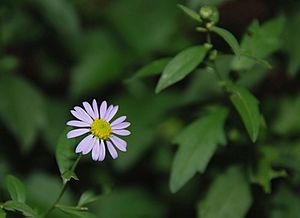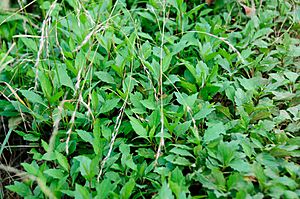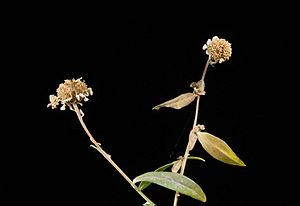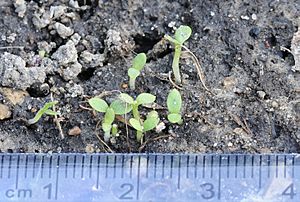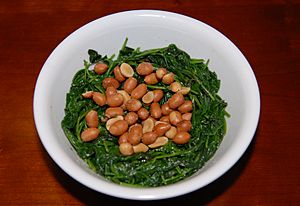Indian aster facts for kids
Quick facts for kids Indian aster |
|
|---|---|
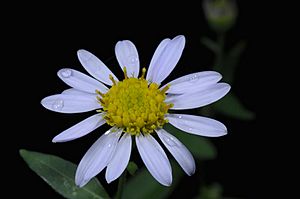 |
|
| Inflorescence of Kalimeris indica | |
| Scientific classification | |
| Genus: |
Kalimeris
|
| Species: |
indica
|
| Synonyms | |
|
|
Kalimeris indica, also known as the Indian aster or Indian Kalimeris, is a beautiful flowering plant. It's a type of herb that lives for many years, meaning it's a perennial. It belongs to the Asteraceae family, which is also known as the daisy or sunflower family.
You can find Kalimeris indica mostly in East Asian countries like China, Korea, and Japan. It has also been brought to places like California and Hawaii.
What is the Indian Aster?
The Indian aster often grows in places like old farms, on hillsides, and between rice fields. You might also see it along roads and paths in forests.
This plant can grow to be about 30 to 70 centimeters tall. Its leaves grow one after another along the stem, and the stems usually stand straight up.
Life Cycle and Reproduction
Indian aster can make new plants in two ways: by producing seeds and by sending out stolons. Stolons are like runners that grow along the ground and can sprout new plants.
The seeds start to grow in early spring. When new seedlings first appear, they are very small. Each of their first leaves, called cotyledons, is only about 2 millimeters long.
The Indian aster starts to bloom in late spring. It will keep flowering until October. The exact time depends on where the plant is growing and how much food (nutrients) is in the soil. The center part of the flower (disk florets) is light yellow. The petals (ray florets) can be either light purple or white. After flowering, the plant produces small, dark fruits.
How People Use Indian Aster
The Indian aster is used a lot in cooking in East Asia. People collect the young leaves and stems in early spring. They often cook them with other foods, like dried tofu (which is also called bean curd).
Many people think it's a special food because of its unique taste. It's especially popular in southern China, near the Yangtze River. There, it's known as 马兰头 (malantou).
See also
 In Spanish: Kalimeris indica para niños
In Spanish: Kalimeris indica para niños


